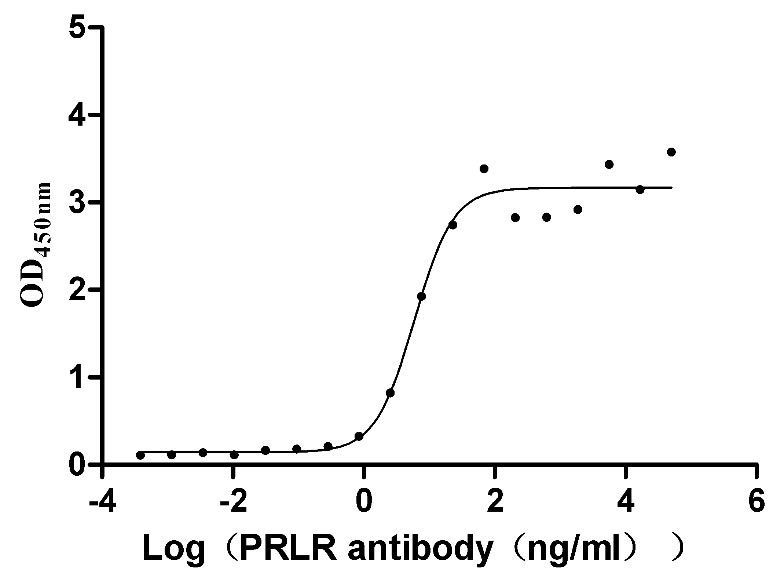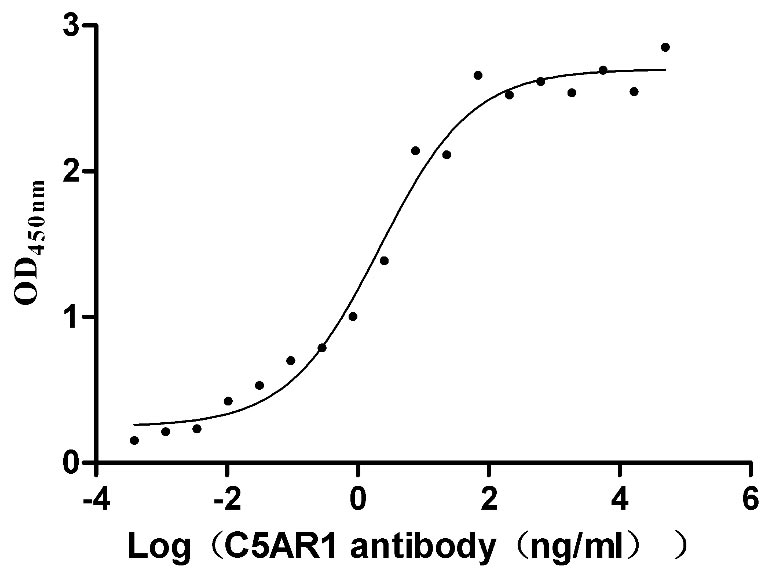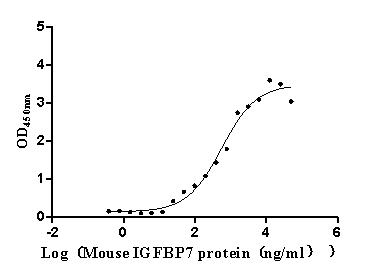Recombinant Dog Transforming growth factor beta-1 proprotein (TGFB1), partial
-
中文名稱:熟悉的犬TGFB1重組蛋白
-
貨號:CSB-YP023446DO
-
規格:
-
來源:Yeast
-
其他:
-
中文名稱:熟悉的犬TGFB1重組蛋白
-
貨號:CSB-EP023446DO
-
規格:
-
來源:E.coli
-
其他:
-
中文名稱:熟悉的犬TGFB1重組蛋白
-
貨號:CSB-EP023446DO-B
-
規格:
-
來源:E.coli
-
共軛:Avi-tag Biotinylated
E. coli biotin ligase (BirA) is highly specific in covalently attaching biotin to the 15 amino acid AviTag peptide. This recombinant protein was biotinylated in vivo by AviTag-BirA technology, which method is BriA catalyzes amide linkage between the biotin and the specific lysine of the AviTag.
-
其他:
-
中文名稱:熟悉的犬TGFB1重組蛋白
-
貨號:CSB-BP023446DO
-
規格:
-
來源:Baculovirus
-
其他:
-
中文名稱:熟悉的犬TGFB1重組蛋白
-
貨號:CSB-MP023446DO
-
規格:
-
來源:Mammalian cell
-
其他:
產品詳情
-
純度:>85% (SDS-PAGE)
-
基因名:
-
Uniprot No.:
-
別名:TGFB1; Transforming growth factor beta-1 proprotein [Cleaved into: Latency-associated peptide; LAP); Transforming growth factor beta-1; TGF-beta-1)]
-
種屬:Canis familiaris (Dog) (Canis lupus familiaris)
-
蛋白長度:Partial
-
表達區域:279-390
-
氨基酸序列ALDTNYCFSSTEKNCCVRQLYIDFRKDLGWKWIHEPKGYHANFCLGPCPYIWSLDTQYSKVLALYNQHNPGASAAPCCVPQALEPLPIVYYVGRKPKVEQLSNMIVRSCKCS
-
蛋白標簽:Tag?type?will?be?determined?during?the?manufacturing?process.
The tag type will be determined during production process. If you have specified tag type, please tell us and we will develop the specified tag preferentially. -
產品提供形式:Lyophilized powder
Note: We will preferentially ship the format that we have in stock, however, if you have any special requirement for the format, please remark your requirement when placing the order, we will prepare according to your demand. -
復溶:We recommend that this vial be briefly centrifuged prior to opening to bring the contents to the bottom. Please reconstitute protein in deionized sterile water to a concentration of 0.1-1.0 mg/mL.We recommend to add 5-50% of glycerol (final concentration) and aliquot for long-term storage at -20℃/-80℃. Our default final concentration of glycerol is 50%. Customers could use it as reference.
-
儲存條件:Store at -20°C/-80°C upon receipt, aliquoting is necessary for mutiple use. Avoid repeated freeze-thaw cycles.
-
保質期:The shelf life is related to many factors, storage state, buffer ingredients, storage temperature and the stability of the protein itself.
Generally, the shelf life of liquid form is 6 months at -20°C/-80°C. The shelf life of lyophilized form is 12 months at -20°C/-80°C. -
貨期:Delivery time may differ from different purchasing way or location, please kindly consult your local distributors for specific delivery time.Note: All of our proteins are default shipped with normal blue ice packs, if you request to ship with dry ice, please communicate with us in advance and extra fees will be charged.
-
注意事項:Repeated freezing and thawing is not recommended. Store working aliquots at 4°C for up to one week.
-
Datasheet :Please contact us to get it.
相關產品
靶點詳情
-
功能:Transforming growth factor beta-1 proprotein: Precursor of the Latency-associated peptide (LAP) and Transforming growth factor beta-1 (TGF-beta-1) chains, which constitute the regulatory and active subunit of TGF-beta-1, respectively.; Required to maintain the Transforming growth factor beta-1 (TGF-beta-1) chain in a latent state during storage in extracellular matrix. Associates non-covalently with TGF-beta-1 and regulates its activation via interaction with 'milieu molecules', such as LTBP1, LRRC32/GARP and LRRC33/NRROS, that control activation of TGF-beta-1. Interaction with LRRC33/NRROS regulates activation of TGF-beta-1 in macrophages and microglia. Interaction with LRRC32/GARP controls activation of TGF-beta-1 on the surface of activated regulatory T-cells (Tregs). Interaction with integrins (ITGAV:ITGB6 or ITGAV:ITGB8) results in distortion of the Latency-associated peptide chain and subsequent release of the active TGF-beta-1.; Multifunctional protein that regulates the growth and differentiation of various cell types and is involved in various processes, such as normal development, immune function, microglia function and responses to neurodegeneration. Activation into mature form follows different steps: following cleavage of the proprotein in the Golgi apparatus, Latency-associated peptide (LAP) and Transforming growth factor beta-1 (TGF-beta-1) chains remain non-covalently linked rendering TGF-beta-1 inactive during storage in extracellular matrix. At the same time, LAP chain interacts with 'milieu molecules', such as LTBP1, LRRC32/GARP and LRRC33/NRROS that control activation of TGF-beta-1 and maintain it in a latent state during storage in extracellular milieus. TGF-beta-1 is released from LAP by integrins (ITGAV:ITGB6 or ITGAV:ITGB8): integrin-binding to LAP stabilizes an alternative conformation of the LAP bowtie tail and results in distortion of the LAP chain and subsequent release of the active TGF-beta-1. Once activated following release of LAP, TGF-beta-1 acts by binding to TGF-beta receptors (TGFBR1 and TGFBR2), which transduce signal. While expressed by many cells types, TGF-beta-1 only has a very localized range of action within cell environment thanks to fine regulation of its activation by Latency-associated peptide chain (LAP) and 'milieu molecules'. Plays an important role in bone remodeling: acts as a potent stimulator of osteoblastic bone formation, causing chemotaxis, proliferation and differentiation in committed osteoblasts. Can promote either T-helper 17 cells (Th17) or regulatory T-cells (Treg) lineage differentiation in a concentration-dependent manner. At high concentrations, leads to FOXP3-mediated suppression of RORC and down-regulation of IL-17 expression, favoring Treg cell development. At low concentrations in concert with IL-6 and IL-21, leads to expression of the IL-17 and IL-23 receptors, favoring differentiation to Th17 cells. Stimulates sustained production of collagen through the activation of CREB3L1 by regulated intramembrane proteolysis (RIP). Mediates SMAD2/3 activation by inducing its phosphorylation and subsequent translocation to the nucleus. Can induce epithelial-to-mesenchymal transition (EMT) and cell migration in various cell types.
-
基因功能參考文獻:
- Results suggested that CD61 (integrin-beta3) could induce canine adipose-derived mesenchymal stem cells (cADMSCs) to differentiate into primordial germ cell (PGC)-like cells by relying on the activation of transforming growth factor beta (TGF-beta) pathway. PMID: 28256590
- obstructive sleep apnea can accelerate the progression of pulmonary remodeling through TGF-beta/miR-185/CoLA1 signaling PMID: 27542203
- TGFbeta1 signaling through the canonical SMAD pathway is increased in myxomatous mitral valves, but does not apparently mediate interstitial cell apoptosis in canine MMVD. PMID: 23816827
- IL-6 markedly decreased the nuclear concentration of a TGF-beta signaling transducer, Smad 2/3. PMID: 23579028
- celastrol downregulates Snail expression, thereby inhibiting TGF-beta1-induced EMT in MDCK and A549 cells PMID: 23850675
- Ostectomy healing with or without platelet-rich plasma as indicated by radiography and expression of PDGF and TGF-beta expression are reported. PMID: 23111655
- This study tested the hypothesis that cyclic strain and TGFbeta1 interact to modify mitral valve interstitial cell phenotype in 3D culture. PMID: 22386586
- PAK2 negatively modulate TGF-beta signaling by attenuating the receptor-Smad interaction and thus Smad activation PMID: 22393057
- This study showed a lack of an effect of recombinant inteferon-gamma on transforming growth factor-beta (TGF-beta) expression in keratinocytes. PMID: 20860556
- Wnt-5a is involved during oncogenic H-Ras/TGF-beta-mediated epithelial-mesenchymal transition PMID: 20511395
- These results show basolateral domain specificity in localization of the TGFbeta receptor signaling apparatus. PMID: 20432436
- These findings suggest that polyunsaturated fatty acids are able to influence proliferation of peripheral blood mononuclear cells in healthy and atopic dogs but do not seem to influence cytokine transcription. PMID: 20187917
- Transforming growth factor-beta 1 secreted by canine transmissible venereal tumor cells suppresses lymphokine-activated killer cytotoxicity. PMID: 14734728
- role played by TGF-beta in mediating the cyclosporine-induced activation of ERK1/2 and the resulting increase in transepithelial electric resistance PMID: 17460148
- TGFbeta1 might be associated with pulmonary vein stenosis after radiofrequency ablation in chronic atrial fibrillation of dogs PMID: 17972164
顯示更多
收起更多
-
亞細胞定位:[Latency-associated peptide]: Secreted, extracellular space, extracellular matrix.; [Transforming growth factor beta-1]: Secreted.
-
蛋白家族:TGF-beta family
-
數據庫鏈接:
Most popular with customers
-
Recombinant Human Leukemia inhibitory factor (LIF) (Active)
Express system: Mammalian cell
Species: Homo sapiens (Human)
-
Recombinant Mouse Desmoglein-3 (Dsg3), partial (Active)
Express system: Mammalian cell
Species: Mus musculus (Mouse)
-
Recombinant Human Tumor necrosis factor receptor superfamily member 9 (TNFRSF9), partial (Active)
Express system: Mammalian cell
Species: Homo sapiens (Human)
-
Recombinant Human Poliovirus receptor (PVR) (I340M), partial (Active)
Express system: Mammalian cell
Species: Homo sapiens (Human)
-
Recombinant Human HLA class II histocompatibility antigen gamma chain (CD74), partial (Active)
Express system: Mammalian cell
Species: Homo sapiens (Human)
-
Recombinant Mouse Prolactin receptor (Prlr), partial (Active)
Express system: Mammalian cell
Species: Mus musculus (Mouse)
-
Recombinant Human C5a anaphylatoxin chemotactic receptor 1 (C5AR1)-VLPs (Active)
Express system: Mammalian cell
Species: Homo sapiens (Human)
-
Recombinant Mouse Complement component C1q receptor (Cd93), partial (Active)
Express system: Mammalian cell
Species: Mus musculus (Mouse)


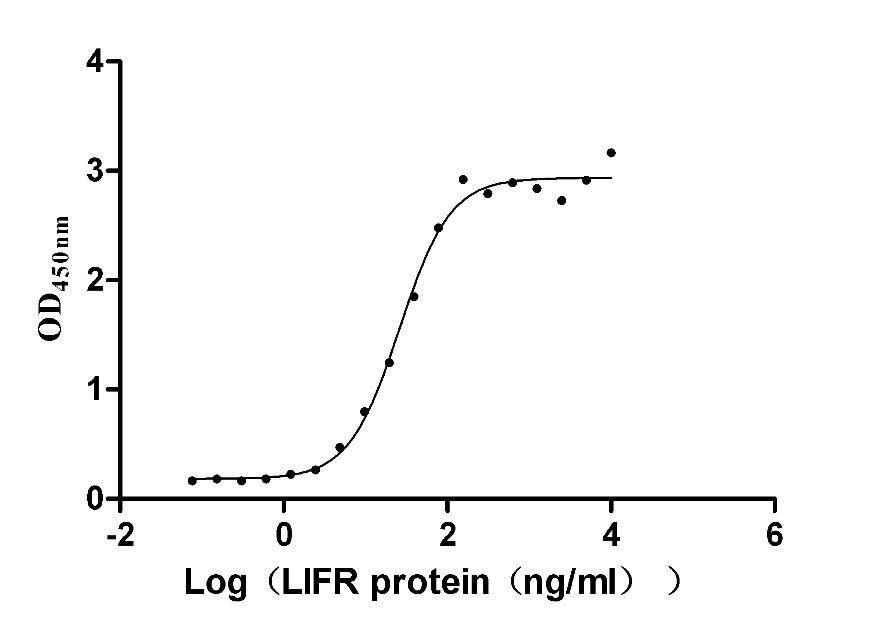
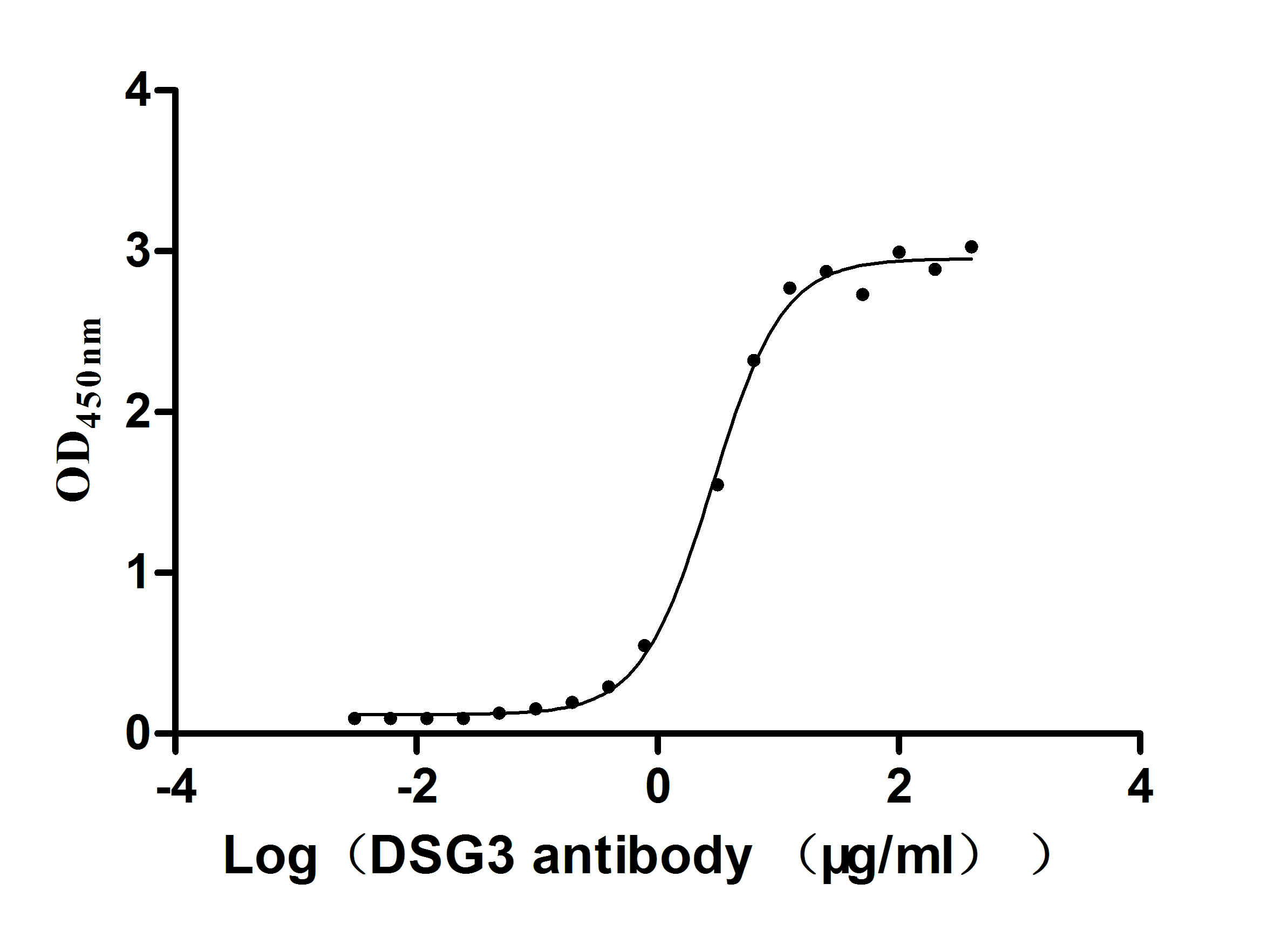
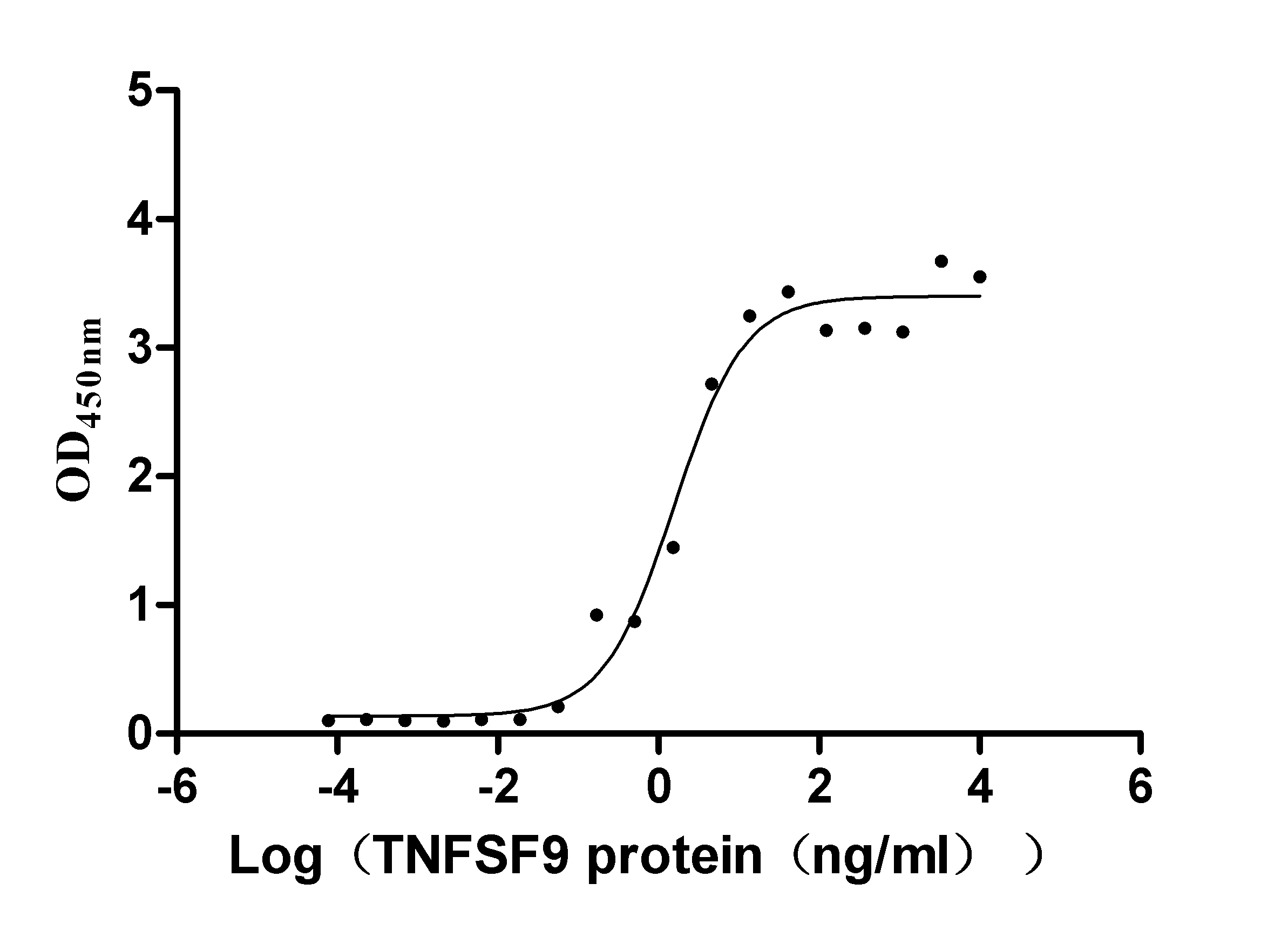
-AC1.jpg)
-AC1.jpg)
